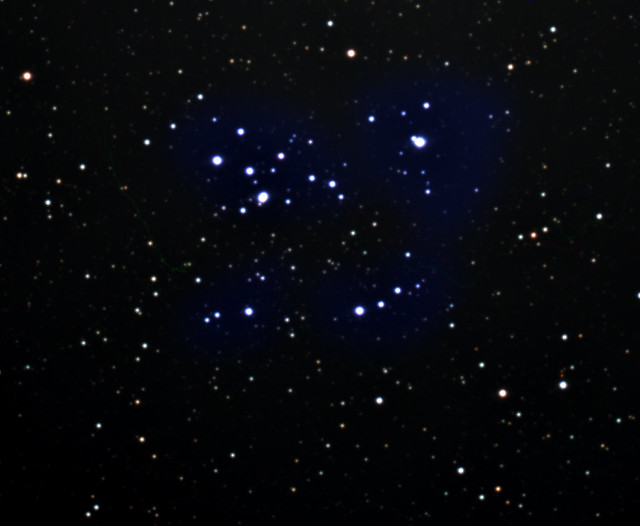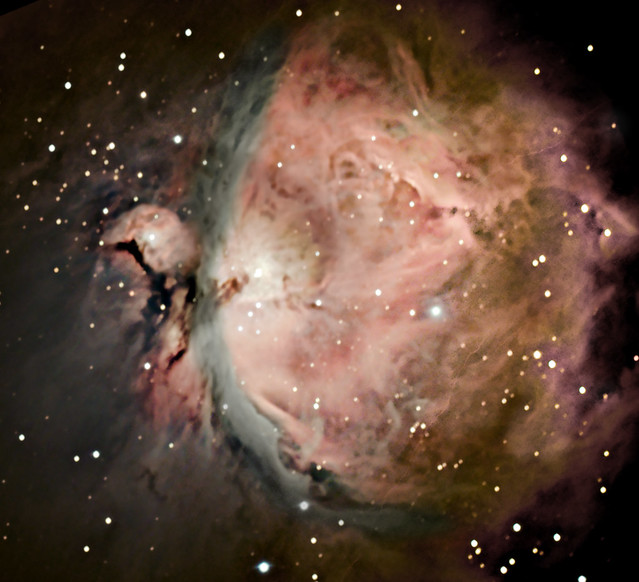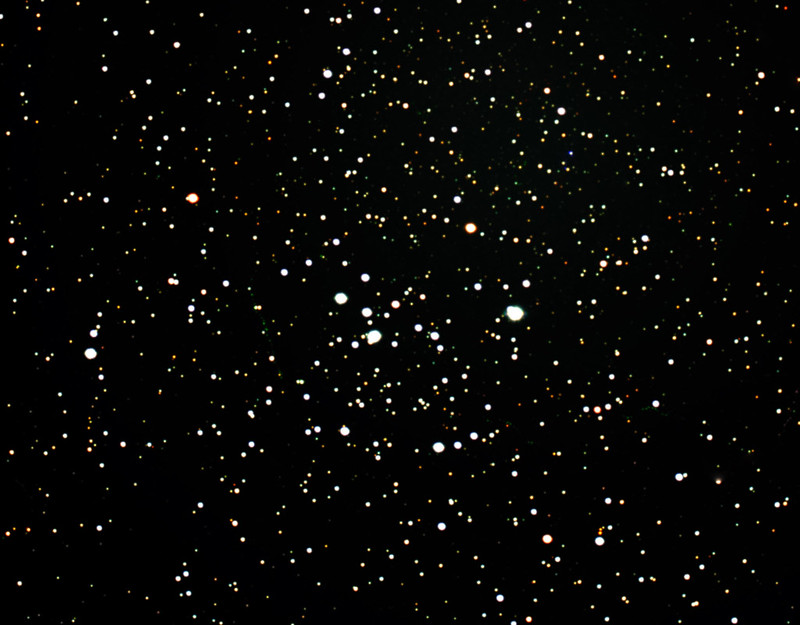
Hi Brian,
Thanks for the reply and do appreciate your input. Above is a redo of the same data taken at the same time but with different processing. I increased the image size to 300% to blend in the pixels in PhotoShop and the Black point was adjusted to a low of 4 for RGB but in the first image the black level was very high as you have alluded to as a possible cause of your concern. In the first image, I used Astronomy Tools to intentionally make the stars fuzzy which increased the stars size but dimmed it as well whereas some might have used "reduce star size", based on their preferences. In SharpCap the Gain was automatically set to 115 by the Brain when 16 bits was chosen. Let me know if this image resolves your concern. Below are the data you requested and then some:
Rick
Debayer Preview=On
Pan=0
Tilt=0In
Output Format=FITS files (*.fits)
Binning=1
Capture Area=5496x3672
Colour Space=RAW16
Hardware Binning=Off
High Speed Mode=On
Turbo USB=100(Auto)
Flip=Horiz
Frame Rate Limit=Maximum
Gain=115
Exposure=2.855107
Timestamp Frames=Off
White Bal (B)=53
White Bal (R)=82
Brightness=4
Temperature=25
Cooler Power=100
Target Temperature=0
Cooler=On
Auto Exp Max Gain=326
Auto Exp Max Exp M S=30000
Auto Exp Target Brightness=158
Mono Bin=Off
Banding Threshold=35
Banding Suppression=0
Apply Flat=None
Subtract Dark=None
#Black Point
Display Black Point=0
#MidTone Point
Display MidTone Point=0.5
#White Point
Display White Point=1
Notes=
TimeStamp=2021-02-10T03:39:20.2835774Z
SharpCapVersion=3.3.7253.0
TotalExposure(s)=3220.56069599996
StackedFrames=1128
LiveStack.SaveRawFrames=None
LiveStack.AlignFrames=True
LiveStack.Derotate=True
LiveStack.StarsForAlignment=15
LiveStack.MinStarSize=3
LiveStack.MaxStarWidth=16
LiveStack.AlignAutoDisabled=False
LiveStack.ReduceNoiseAmount=0.5
LiveStack.DigitalGain=Off
LiveStack.BlackThreshold=20
LiveStack.BrightnessLimit=79.72973
LiveStack.FilterBrightness=True
LiveStack.AutoBrightnessLimit=False
LiveStack.FWHMLimit=7.216213
LiveStack.FilterFWHM=True
LiveStack.WarningThreshold=5
LiveStack.StackingMode=0
LiveStack.SigmaClipInitialCount=15
LiveSack.SigmaClipThreshold=3.492064
LiveStack.SigmaClipLowLimit=5.026454
LiveStack.AutoSaveReset=False
LiveStack.AutoSaveResetMinutes=30
LiveStack.LogarithmicHistogramHorizontalAxis=False
LiveStack.AutoSave=False
LiveStack.BlackLevel=0
LiveStack.WhiteLevel=100
LiveStack.MidLevel=25
LiveStack.WBB.db=0
LiveStack.WBG.db=0
LiveStack.WBR.db=0
LiveStack.Saturation=1.252567
AutoStretch.Strength=2.01005




